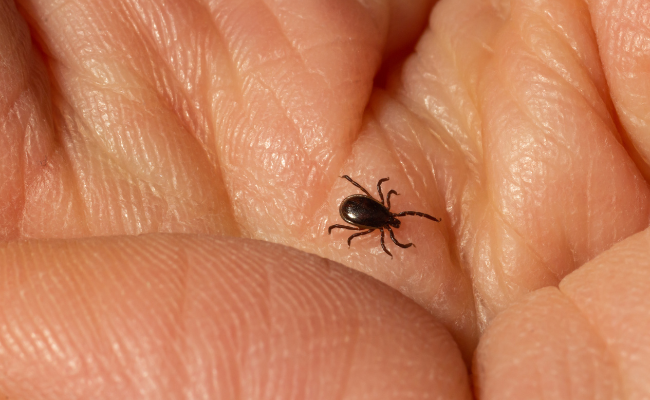How to Treat Babesiosis?
- November 16, 2023
- No Comments

What is Babesiosis?
Babesiosis, an infectious disease brought about by Babesia parasites, is primarily transmitted to humans through tick bites. These parasites, belonging to the genus Babesia, invade red blood cells, resulting in a spectrum of symptoms that can vary in intensity. The prevalence of this disease is notably reported in specific regions of the United States, notably in the Northeast, Midwest, and parts of the West, where the ticks carrying the Babesia parasites are abundant.
Babesiosis is recognized as an emerging health concern, with its incidence showing an upward trend in recent years.Pronounced as "buh-BEE-zee-oh-sis," babesiosis stems from various species of the Babesia parasite and is typically transmitted through bites from infected blacklegged ticks or, less frequently, via organ transplants.
Why is Treatment Necessary for Babesiosis?
The necessity for treatment of babesiosis stems from the potential severity of the disease. While some individuals infected with Babesia may experience mild symptoms or even be asymptomatic, the infection can become severe, particularly in certain vulnerable populations. Those with weakened immune systems, the elderly, or individuals without a spleen are at a higher risk of developing severe complications from babesiosis.
Severe cases of babesiosis can lead to complications such as hemolytic anemia, where the red blood cells are destroyed, as well as organ failure. In rare instances, babesiosis can be fatal. Therefore, prompt and appropriate treatment is crucial to prevent the progression of the disease and its potential life-threatening complications.
How is Babesiosis Treated?
- Antiparasitic Medications: The cornerstone of babesiosis treatment involves the use of antiparasitic medications. The two primary drugs used are atovaquone and azithromycin, or a combination of clindamycin and quinine. These medications work by targeting the Babesia parasites in the bloodstream, disrupting their life cycle and ultimately eliminating the infection.The choice of medication and treatment duration may vary based on the severity of the infection, the patient's overall health, and other individual factors.
- Supportive Care: In addition to antiparasitic medications, supportive care is often provided to manage symptoms and aid in the recovery process. This may include measures to address fever, pain, and any associated complications.In severe cases, hospitalization may be required to closely monitor and manage complications such as hemolytic anemia or respiratory distress.
- Blood Transfusions: For individuals with severe babesiosis leading to significant anemia, blood transfusions may be necessary to replace the damaged red blood cells and improve oxygen delivery to tissues.
- Adjunctive Therapies: In certain cases, healthcare providers may consider adjunctive therapies, such as exchange transfusion. This involves replacing a portion of the patient's blood with donor blood, aiming to rapidly decrease the parasite load in the bloodstream.
Treatment Solutions for Babesiosis:
- Early Diagnosis: Timely diagnosis is critical for effective babesiosis treatment. Healthcare providers utilize blood tests to detect the presence of Babesia parasites or antibodies, enabling the prompt initiation of appropriate treatment.Early diagnosis also contributes to preventing the spread of the disease, as individuals can be isolated and appropriate precautions taken to avoid further transmission.
- Customized Medication Regimens: The choice of antiparasitic medications and treatment duration is tailored to the individual patient. Healthcare providers consider factors such as the severity of the infection, the presence of underlying health conditions, and the patient's response to treatment.
- Monitoring and Follow-up: Patients undergoing treatment for babesiosis require careful monitoring to assess the response to medication and manage any potential side effects. Follow-up appointments are essential to track recovery and address any lingering symptoms.
- Preventive Measures: Preventing tick bites is a key aspect of babesiosis management. Individuals in endemic areas should take precautions, such as using insect repellent, wearing long sleeves and pants, and performing regular tick checks after outdoor activities.Public health measures, such as tick control programs and community education, also play a role in preventing the spread of babesiosis.
Benefits of Treating Babesiosis:
- Symptom Relief: Treatment helps alleviate the symptoms of babesiosis, including fever, chills, fatigue, and muscle aches. This contributes to the overall well-being of the affected individual and enhances their quality of life.
- Prevention of Complications: Early and appropriate treatment reduces the risk of complications associated with severe babesiosis, such as organ failure or disseminated intravascular coagulation (DIC). By addressing the infection promptly, healthcare providers can mitigate the potential long-term impact on the patient's health.
- Shortened Recovery Time: Prompt initiation of treatment contributes to a faster recovery. This allows individuals to resume their normal activities sooner and reduces the overall impact of the infection on daily life.
- Prevention of Transmission: Effective treatment helps prevent the transmission of the Babesia parasites from an infected individual to uninfected ticks. Breaking the cycle of the disease is essential for preventing further cases and reducing the overall burden of babesiosis in endemic areas.
Comments (0)